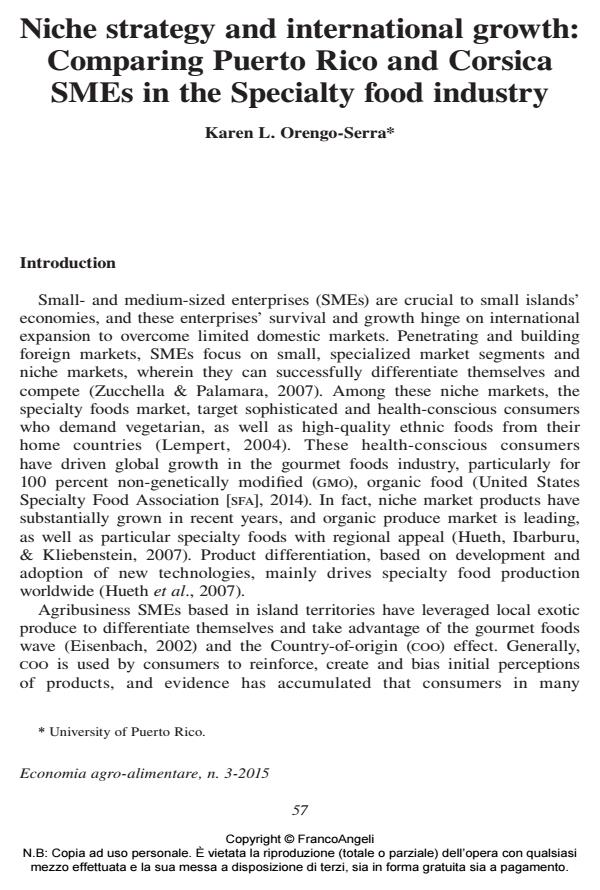Niche strategy and international growth: Comparing Puerto Rico and Corsica SMEs in the Specialty food industry
Journal title ECONOMIA AGRO-ALIMENTARE
Author/s Karen L. Orengo-Serra
Publishing Year 2015 Issue 2015/3
Language English Pages 32 P. 57-88 File size 323 KB
DOI 10.3280/ECAG2015-003004
DOI is like a bar code for intellectual property: to have more infomation
click here
Below, you can see the article first page
If you want to buy this article in PDF format, you can do it, following the instructions to buy download credits

FrancoAngeli is member of Publishers International Linking Association, Inc (PILA), a not-for-profit association which run the CrossRef service enabling links to and from online scholarly content.
The difficulty of accessing resources easily and the organizational structure of small and medium enterprises (SM Es) partially explain how the niche market strategy has become the gateway to international markets. The niche market for specialty gourmet and luxury products has been flourished worldwide, where SM Es have been successfully positioning. This strategy has not yet been addressed in the context of businesses operating on small island economies. This study aims to identify and to compare elements within the niche strategy as managerial tool for the internationalization of SM Es from Puerto Rico and from Corsica. In this study, emphasis was placed on the combined use of a Qualitative methodology and content analysis approach for case studies. Findings suggest that product origin, quality, and differentiation are some elements emerging from the niche market strategy adopted by firms for international expansion.
Keywords: SM Es, business networks, niche market, internationalization, agri-foods
Jel codes: F2, L14, M31
- International marketing strategies leveraging country-of-origin effects in luxury market: a systematic review and research agenda Tathagata Ghosh, Rajeev Kumra, Melanie Pius Dsouza, Maciej Mitrega, Vojtěch Spáčil, Gregor Pfajfar, in International Marketing Review /2025 pp.1
DOI: 10.1108/IMR-01-2025-0016 - Building a Strategic Trade and Industrial Policy for Puerto Rico in the Context of Colonial Exclusion and Lack of a Development Strategy Maribel Aponte-García, Karen Orengo-Serra, in Latin American Perspectives /2020 pp.30
DOI: 10.1177/0094582X20911447
Karen L. Orengo-Serra, Niche strategy and international growth: Comparing Puerto Rico and Corsica SMEs in the Specialty food industry in "ECONOMIA AGRO-ALIMENTARE" 3/2015, pp 57-88, DOI: 10.3280/ECAG2015-003004